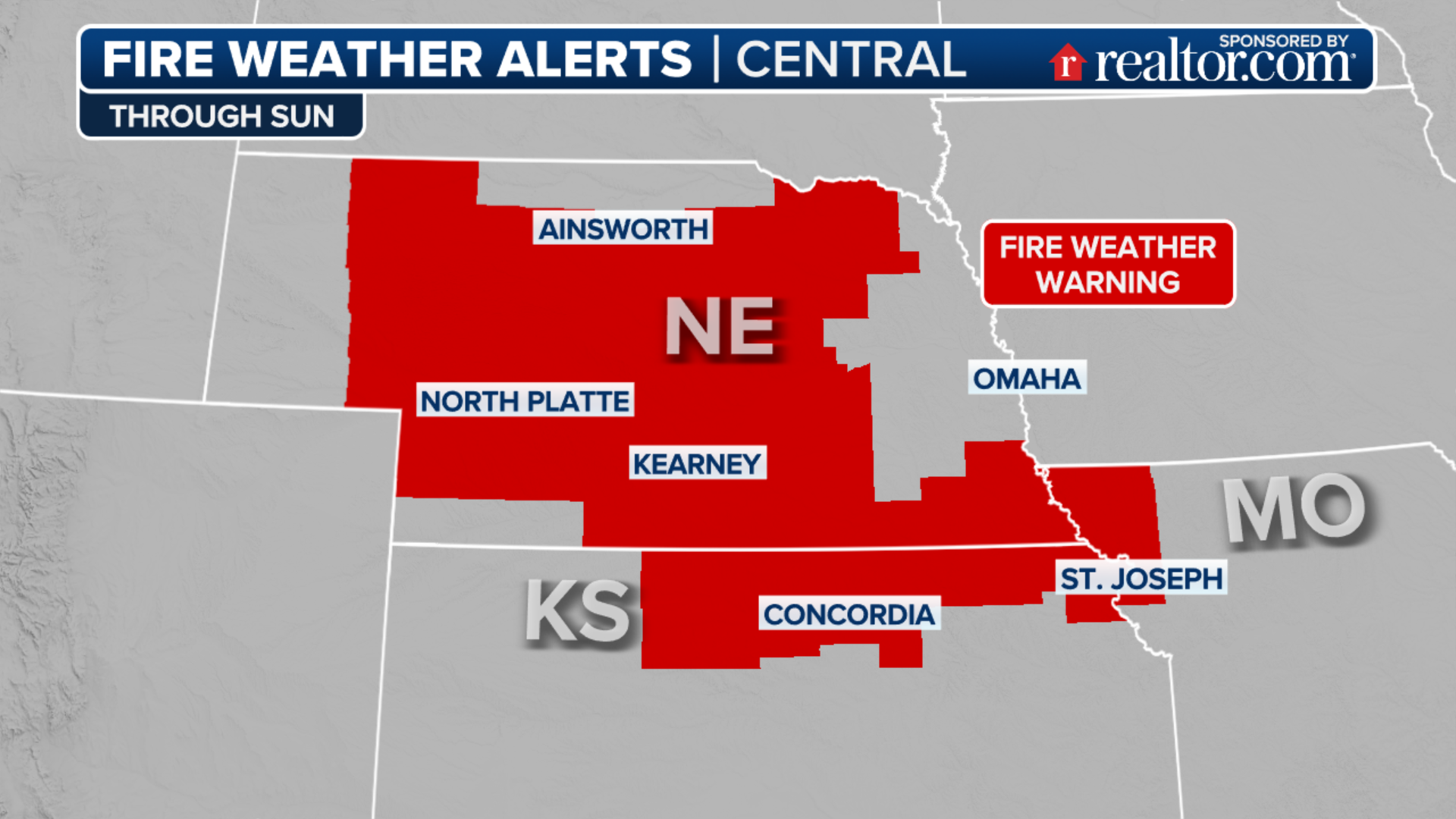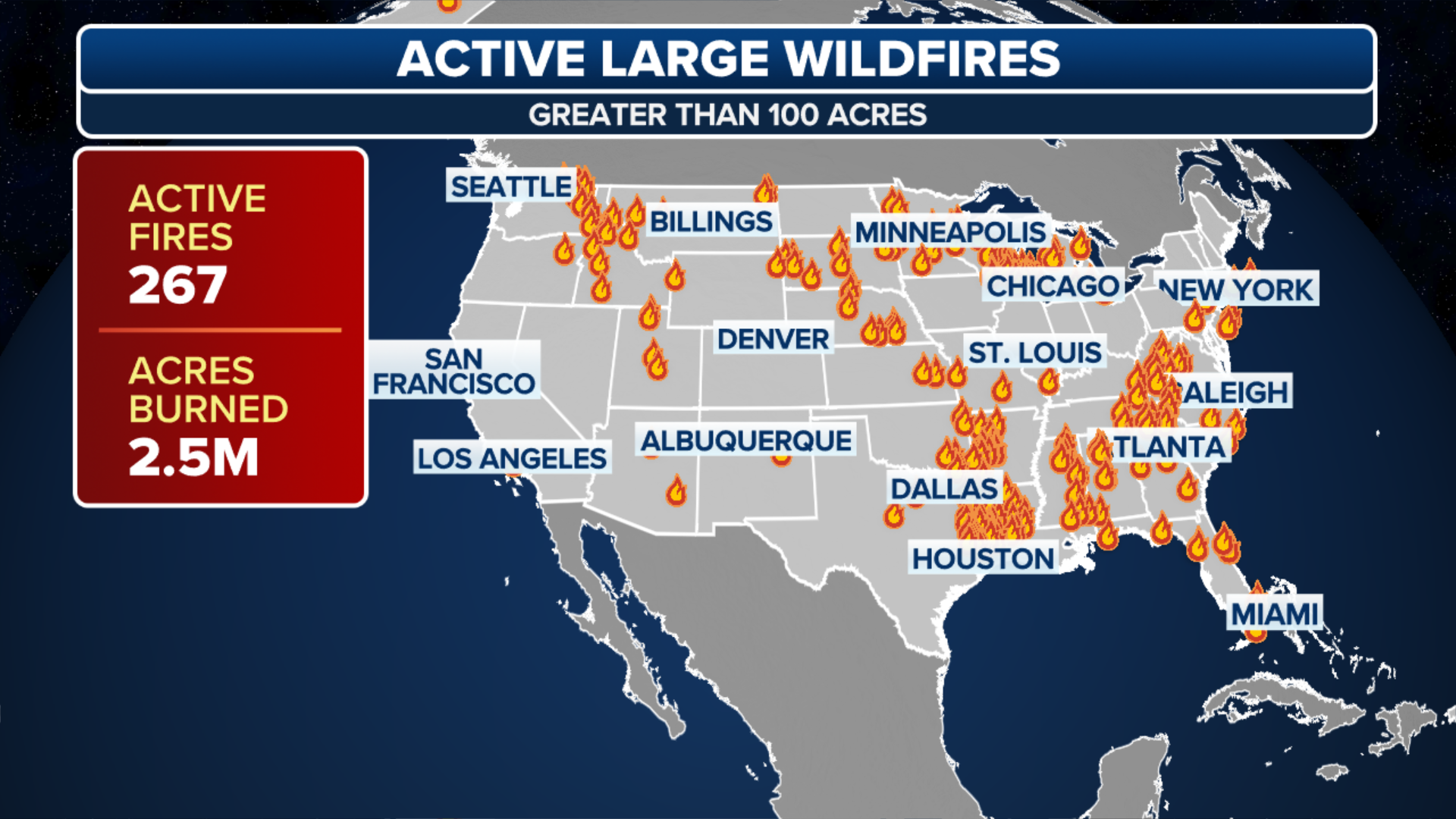Threat of wildfires reaches critical levels for millions of Americans on Tuesday
Extremely dry conditions, strong winds are the perfect combinations for wildfires to grow and spread rapidly if any were to ignite
Millions of Americans under a critical risk of wildfires on Tuesday
Fire Weather Warning are in effect from the Northern Plains to the Southwest as the threat of wildfires reaches critical levels on Tuesday.
The threat of wildfires will reach critical levels from the Plains to the Southwest on Tuesday, putting millions of Americans at risk.
Extremely dry conditions and strong winds are the perfect combinations for wildfires to grow and spread rapidly if any were to ignite.
HOW TO WATCH FOX WEATHER ON TV

NOAA's Storm Prediction Center says a large portion of the central United States will see elevated or critical fire weather conditions.
HOW TO BEST PREPARE YOUR HOMES FOR WILDFIRES
The critical risk includes a portion of northern Montana, southern South Dakota, eastern Wyoming, most of Nebraska, eastern Colorado and northwestern Kansas.

Conditions are also critical across most of New Mexico and North and West Texas.
On Tuesday, relative humidity levels will drop to the single digits across much of the area. Amarillo and Midland, Texas, will see levels around 7% by late Tuesday afternoon.
HOW THE LAY OF THE LAND AFFECTS WILDFIRE BEHAVIOR
People living or working in areas seeing an elevated or critical risk of fires should monitor local conditions and refrain from any activities that could cause a spark.

Because of the conditions, more than 11.5 million Americans are under a Fire Weather Alert.
Fire Weather Warnings extend from South Dakota and points south through the Central Plains, the Rockies, most of New Mexico and West Texas.
Fire Weather Watches include areas of central Kansas and Oklahoma and South Texas.

The lack of snowfall during the winter and reduced rain during the spring has much of the region dealing with significant drought issues and unseasonably high fire danger levels.
The stretches of dry weather have kept firefighters busy.
Crews report battling more than four-dozen large wildfires from the Plains to the Southeast and into the Tennessee Valley.

The National Interagency Fire Center reports that year-to-date, the U.S. has already seen around 20% more acres burned than during the 10-year average.
Climate outlooks indicate the dry weather will continue through April and could last into the summer because of La Niña.
The National Significant Wildland Fire Potential Outlook shows areas under the threat of significant wildfires expanding in coverage through the summer.
